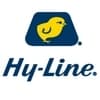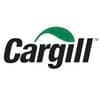Cama de pollos como parte del silo de maiz
Publicado: 22 de agosto de 2007
Fuente: Alexis Moya
Temas relacionados:
Mencionados en esta noticia:
Recomendar
Comentar
Compartir

2 de noviembre de 2011
Hola que tal yo me encuentro en Guadalajara Jalisco Mex. y tengo un producto muy similar pero es una zeolita la cual retiene el amoniaco en las camas y mejora considerablemente la calidad de las aves ya que no se persisten aroma amoniacados este producto se aplica cuando se termina el tratamiento de las coccideas estoy a sus ordenes mvz.armando@gmail.com ya se que use parte del silo de maíz
Recomendar
Responder
3 de noviembre de 2011
Tengo clientes que han usado hasta 20% de cama de pollos y 80% de maiz con mucho exito en ganado de cria de carne.Los analisis nos han dao 38% MS y 12,3% proteina cruda, normalmente lo que haces es mezclar antes de ensilar en silos trinchera.
este es un buen articulo que puede ser revisado:
Fermentation characteristics and nutritive value of broiler litter ensiled with corn forageS.M. Chaudhry, Z. Naseer, D.M. Chaudhry
Purchase Animal Nutrition Program, Animal Sciences Institute, National Agricultural Research Centre, Islamabad 45500, Pakistan
Received 24 June 1992; Accepted 20 October 1992. Available online 2 October 2003.
Abstract
Fermentation characteristics and nutritive value of broiler-litter and corn-forage silages were determined. Corn forage was ensiled with and without broiler litter. Silages were prepared in 200-litre metal drums lined with double layers of polyethylene bags. Proportions of broiler litter and corn forage were 0 : 100, 20 : 80, 30 : 70 and 40 : 60 wet basis, respectively. After 45 days, silages were opened; all silages had desirable aromas and no mould growth was observed on the top of any silage. Addition of broiler litter to corn forage increased the crude protein linearly (P < 0·05) from 8·64 to 10·8% on a dry-matter basis. The crude protein was increased linearly (P < 0·05) with increase of broiler litter. The pH values of ensiled mixtures of corn forage and broiler litter were 4·19, 4·65, 5·09 and 5·47. All silages had substantial levels of lactic acid. In digestion trials, four wethers were fed corn-forage silage alone, and silages of corn forage and broiler litter mixed in the ratios of 20 : 80, 30 : 70 and 40 : 60, respectively. The experiment was designed as a 4 × 4 latin square and orthogonal poly-nomials were run to see the treatment effect. Digestibilities of dry matter, crude protein, ether extract and organic matter were higher (P < 0·05) for the animals fed silages containing broiler litter compared to animals fed corn-forage silage alone. The results indicated that the broiler litter is a good source of protein and can be mixed with low-protein forages. Moreover, ensiling of broiler litter was effective for destruction of pathogenic organisms, and animals showed no ill health effect when silages were fed to sheep. It may be concluded from the study that the use of poultry waste as a feed ingredient will not only reduce waste disposal and pollution, but will also provide inexpensive feed components for ruminants
Recomendar
Responder
1

¿Quieres comentar sobre otro tema? Crea una nueva publicación para dialogar con expertos de la comunidad.








